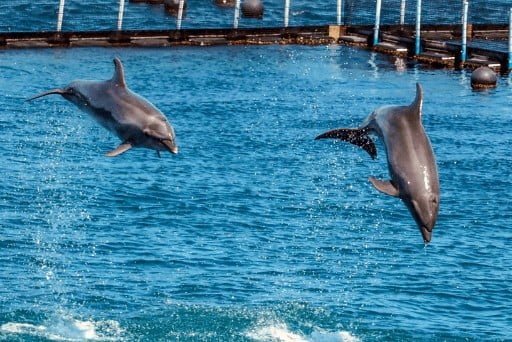Do dolphins have echolocation? All you need to know
Do dolphins have echolocation and use it to communicate? Have you ever thought how marine mammals like whales and dolphins communicate and hunt in the turbid-water where light cannot penetrate deep? Well, these mammals use echolocation in order to communicate and find their way in the sea.
You must have been mesmerized by the way dolphins glide through the water and sail through the air many times. Other animals similar to dolphins like porpoises, whales, bats use the same technique for communication.
Dolphins are called the intelligent sea mammals for a reason. They use sound waves to navigate, hunt, communicate, defend from the predators.
In this blog, you will get to know more about dolphins and echolocation. So, just scroll down if you are intrigued to know it all.
Why Is Sound In The Ocean Significant?

We all know that the ocean is deep, and there is no way light can easily penetrate into it to guide the living beings down there. Mammals like whales and dolphins communicate with one another and find their way. It also helps them to avoid big predators at night. The limited vision in waters has also made their listening skills excel. So naturally, they are blessed with great listening and communication skills. Without these communication capabilities, dolphins would not be able to survive in the vast ocean.
How Is The Sound Produced?
Humans vocalize when they exhale through the lungs and force the air through the larynx. The vocal cords present in the larynx will start vibrating eventually producing sounds. Our tongue, mouth, throat, lips and teeth help in creating different sounds that result in speech.
Dolphins have larynx but no vocal cords that can produce speech. The sound they produce is made when the air is passed through the nasal passage. With bioacoustics research, scientists were able to understand the nasal speech of the echolocation with dolphins. Studies have stated that a complex tissue in the nasal region is responsible for all the sounds.
The complex tissue is named phonic lips; it is the structure that goes through the nasal passage. When the air enters the nasal passage and goes through the phonic lips, the surrounding tissue starts vibrating and produces sounds.
There are two dorsal bursas or phonic lips complexes in a dolphin both operating independently. That’s the reason bottlenose dolphins can whistle and click at the same time.
There have been instances where bottlenose dolphins release air from the blowhole. However, scientists believe that the bubbles are just visual display and not actual sound production.
Bottlenose dolphins can whistle that sounds like trills, moans, squeaks and grunts. They can make these sounds at any time and any depth. The sounds they produce often vary in pattern, frequency, wavelength and volume.
The frequencies of bottlenose dolphins generally range from 0.2 to 150 kHz. For social communications, they use a lower range of frequency (0.2 to 50 kHz). Social signals can be as high as 40 kHz. The higher frequency click sounds are used by echolocation with dolphins which range from 40 kHz to 5 kHz.

More About The Signature Whistles From Bottlenose Dolphins
Bottlenose dolphins are identified with their signature whistles. Each dolphin has a signature whistle that sets them apart from others. Their whistles are so distinctive that scientists can detect individual dolphins by checking the sonograms of their whistles.
These bottlenose dolphins use these unique whistles to communicate, locate, identify, and express. Dolphins have been found to use different whistles to cooperate with others, give motherly care, address other dolphins, etc. The signature whistles have frequencies between 7 kHz to 15 kHz and are less than a second longer.
How They Use Echolocation?
Echolocation is the process of determining the distance of an object by producing high-frequency sound waves. These sound waves travel and bring back the echoes from the object.
Sea mammals like dolphins use echolocation by producing clicking sounds and receiving the resulting echoes. Bottlenose dolphins are said to product clicks in sequence to echolocate. Each click will be about 50 to 128 microseconds longer, and frequency will be 40 to 130 kHz.
The click sequence will pass through the melon that is special fats in dolphins; it can also be called the acoustic lipids. The melon will work as an acoustical lens to focus on the sound waves. It converts the sound waves to beam that passes through the water in front of the animal. These beams will bounce off the objects or other animals in the water and return to the form of echo to the dolphin.

The Bottom Line – Do dolphins have echolocation?
With the help of echolocation, dolphins have been able to emerge as an intelligent sea mammal. Echolocation helps in tracking the trail and also communicating with other dolphins. Whales also use the same technique to find their way in the sea.
The above mentioned was a quick guide on dolphins and echolocation for those who are intrigued about how dolphins manage to live in the vast ocean.




